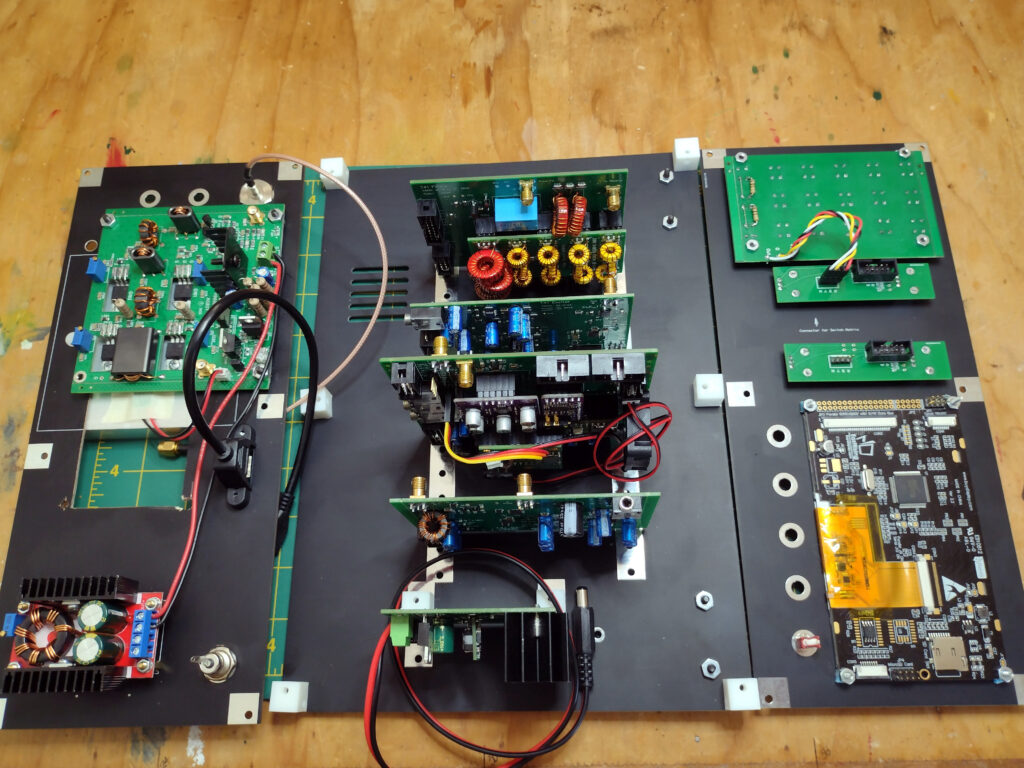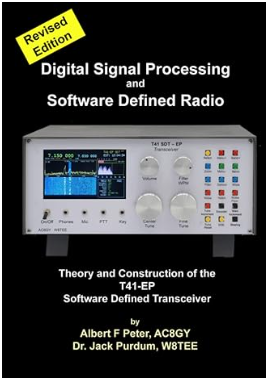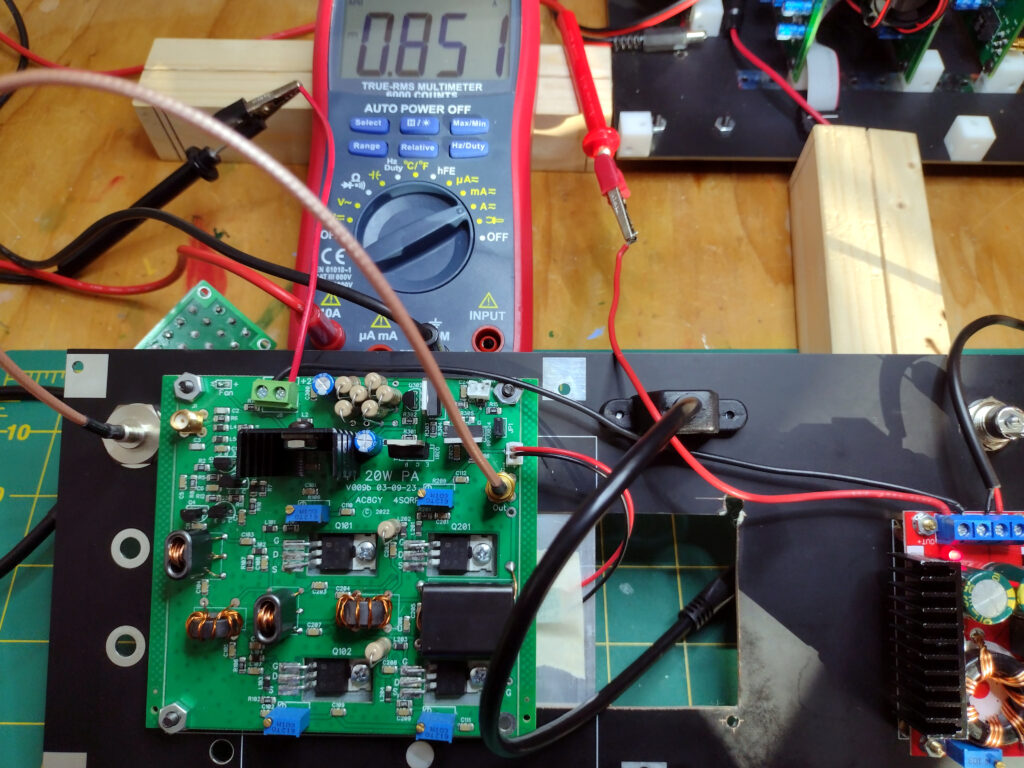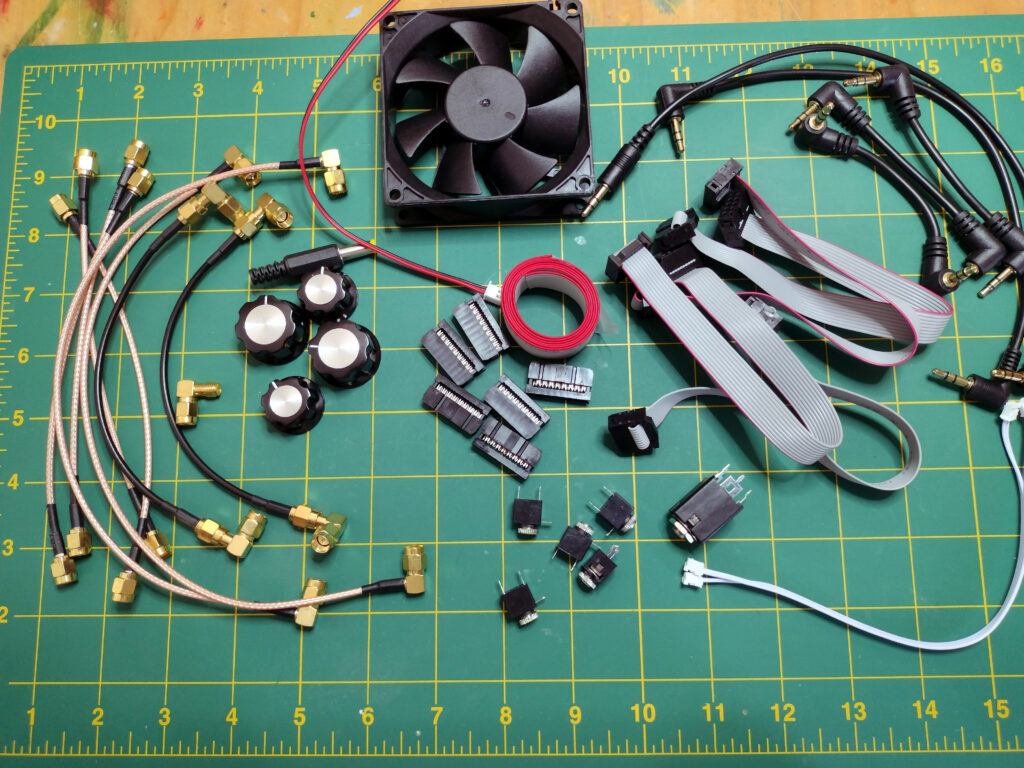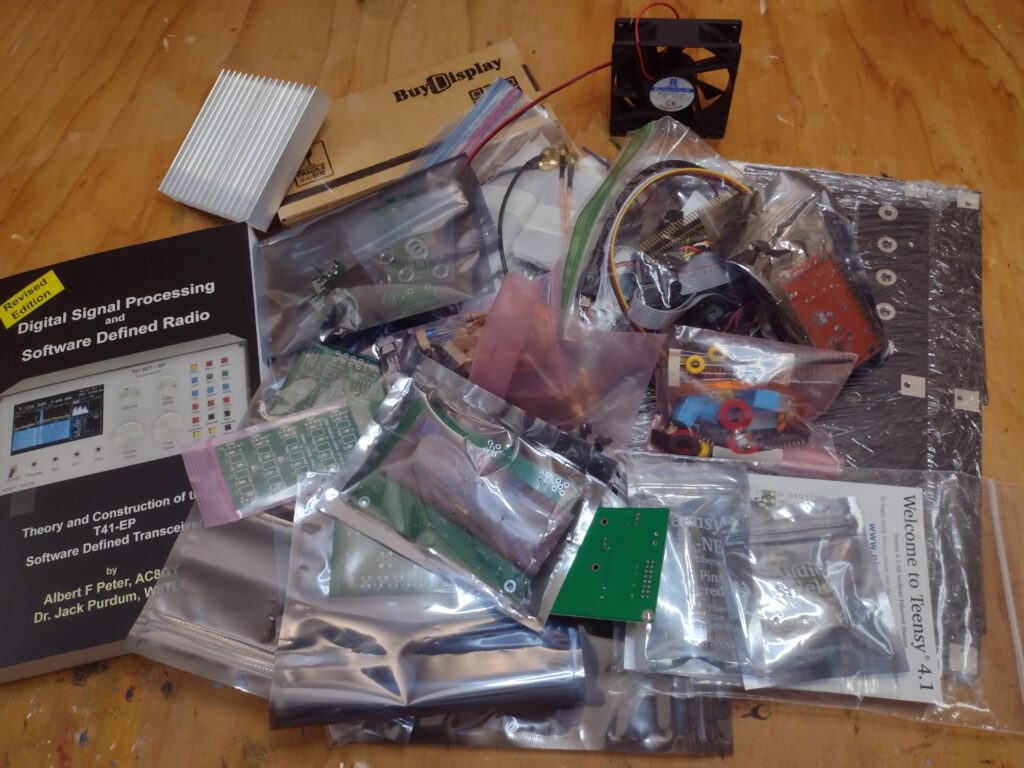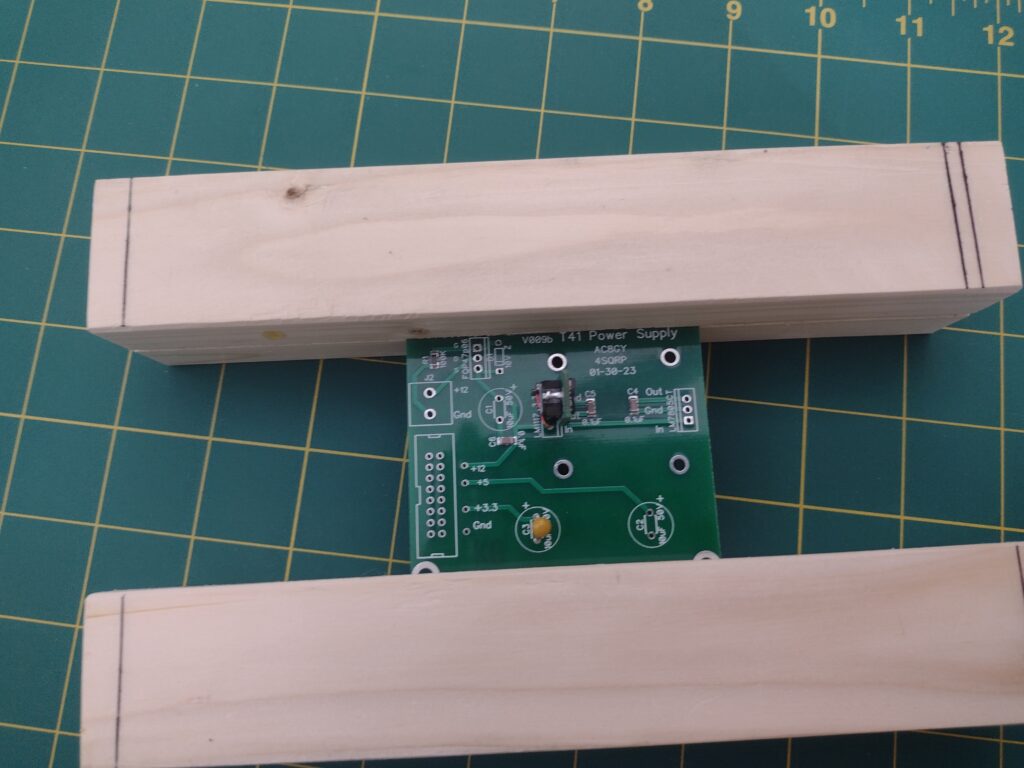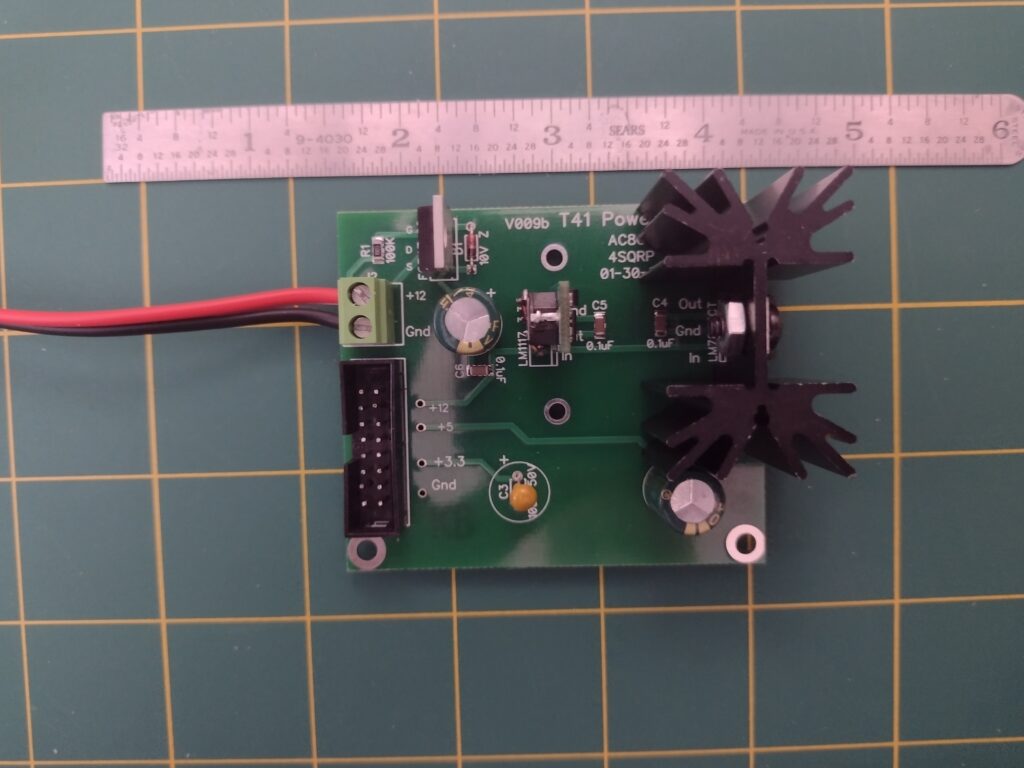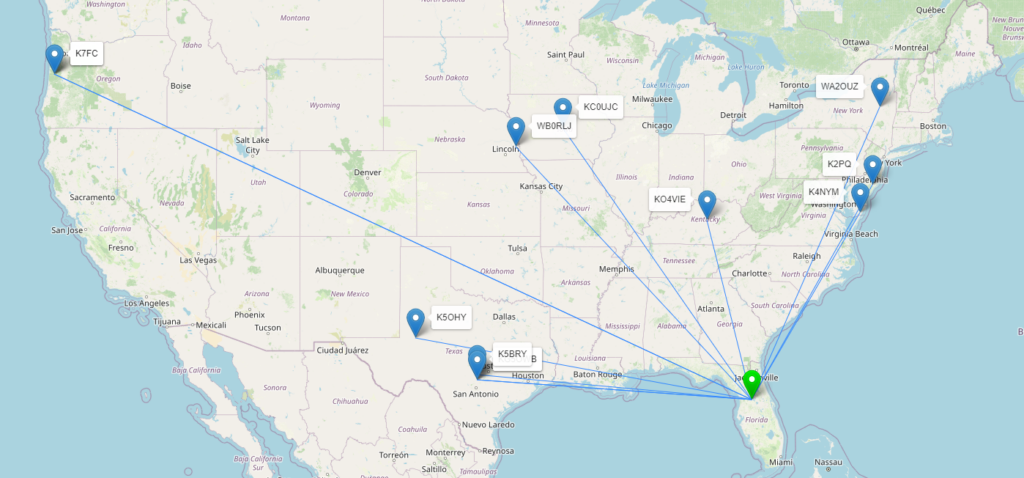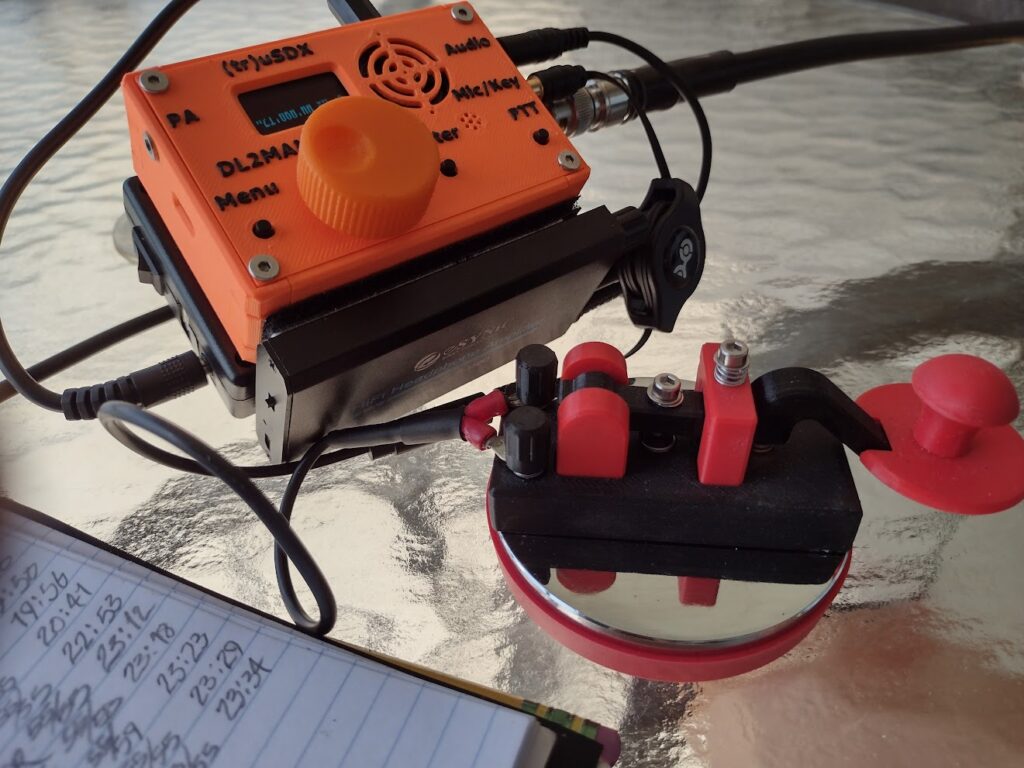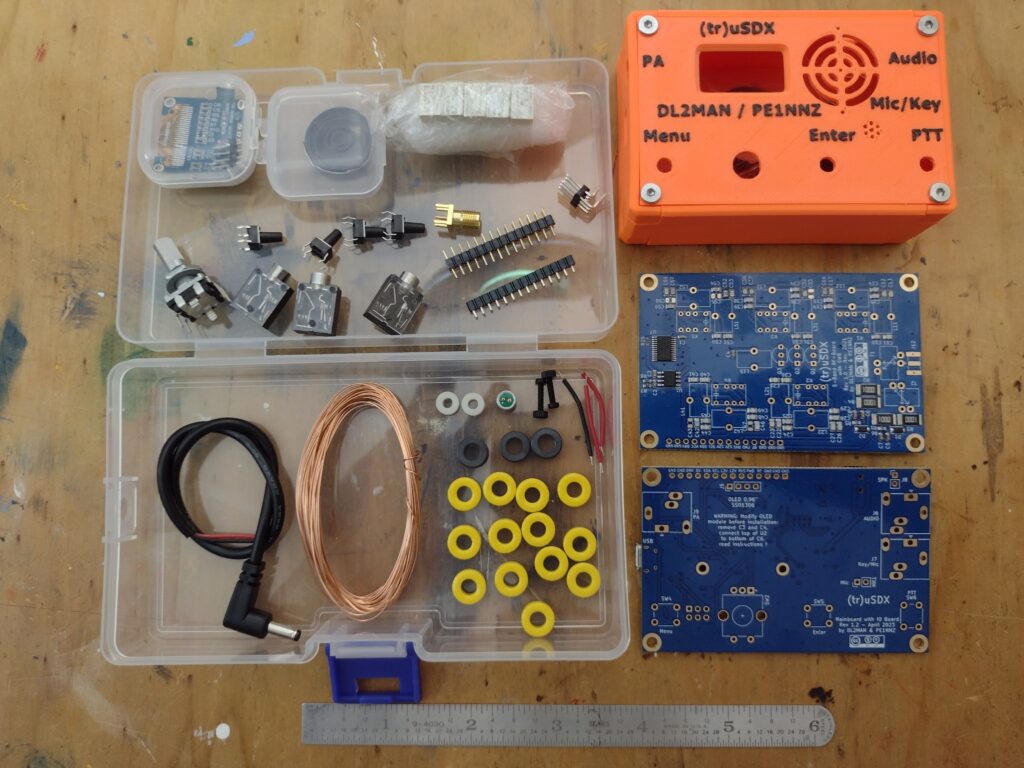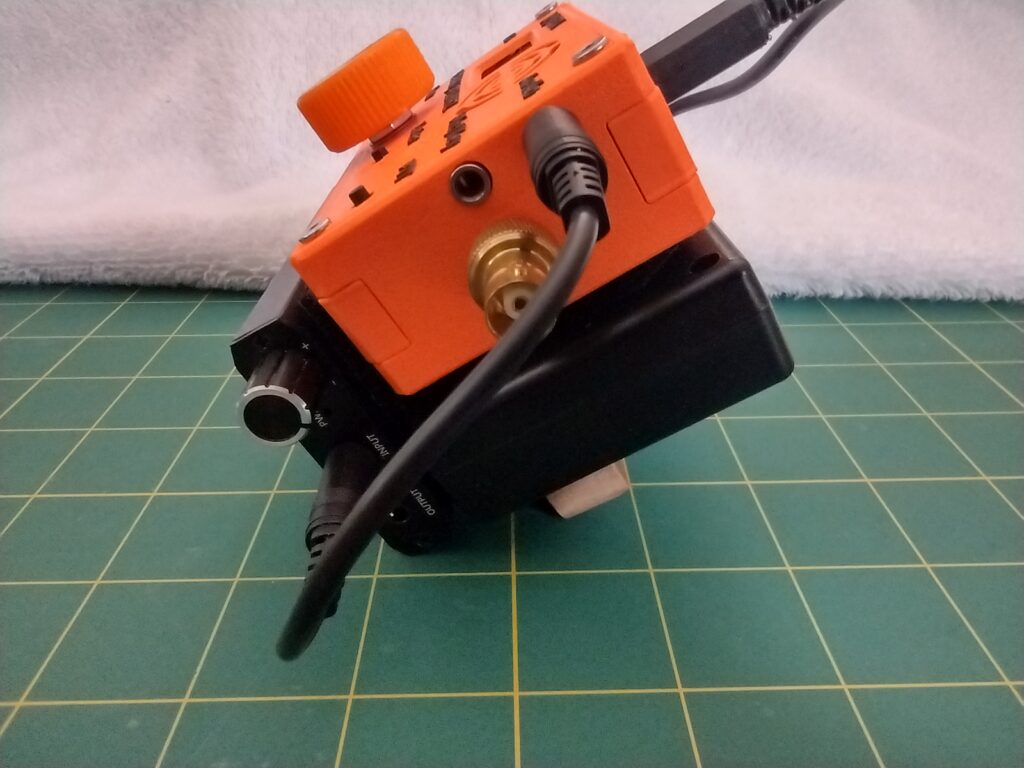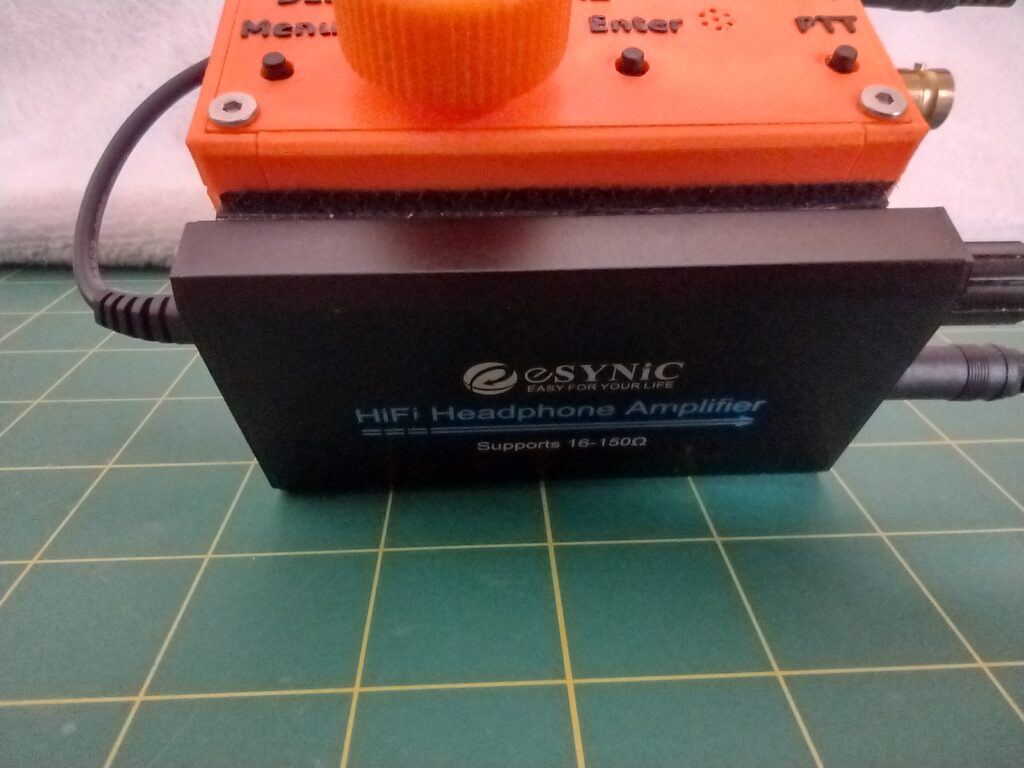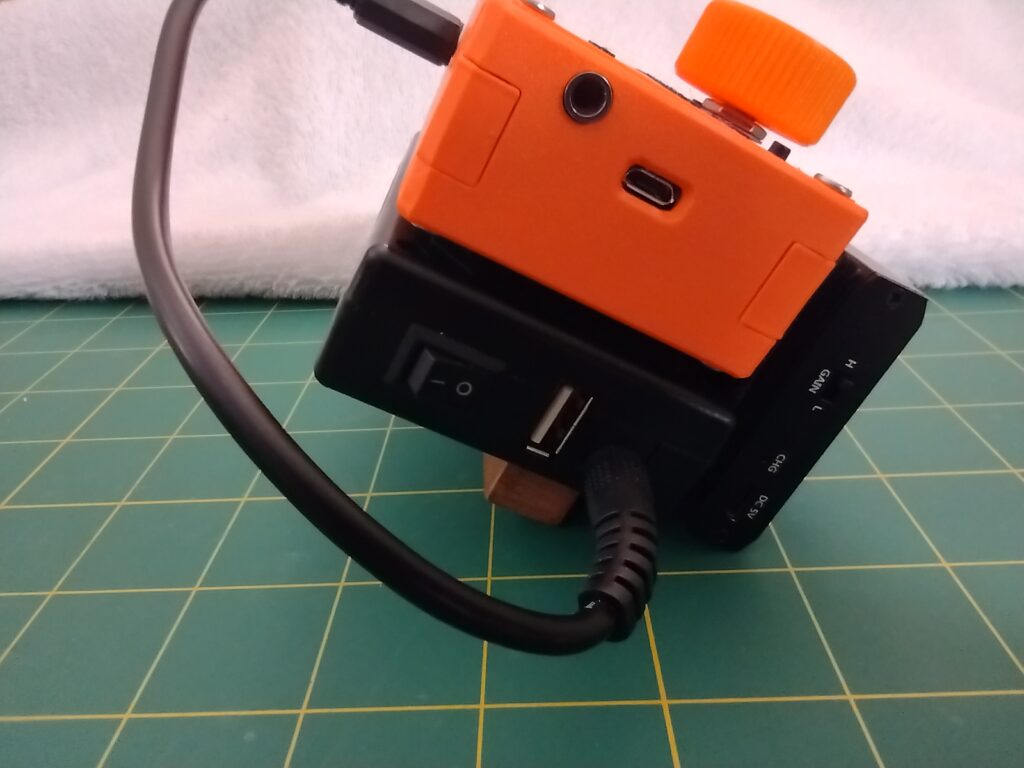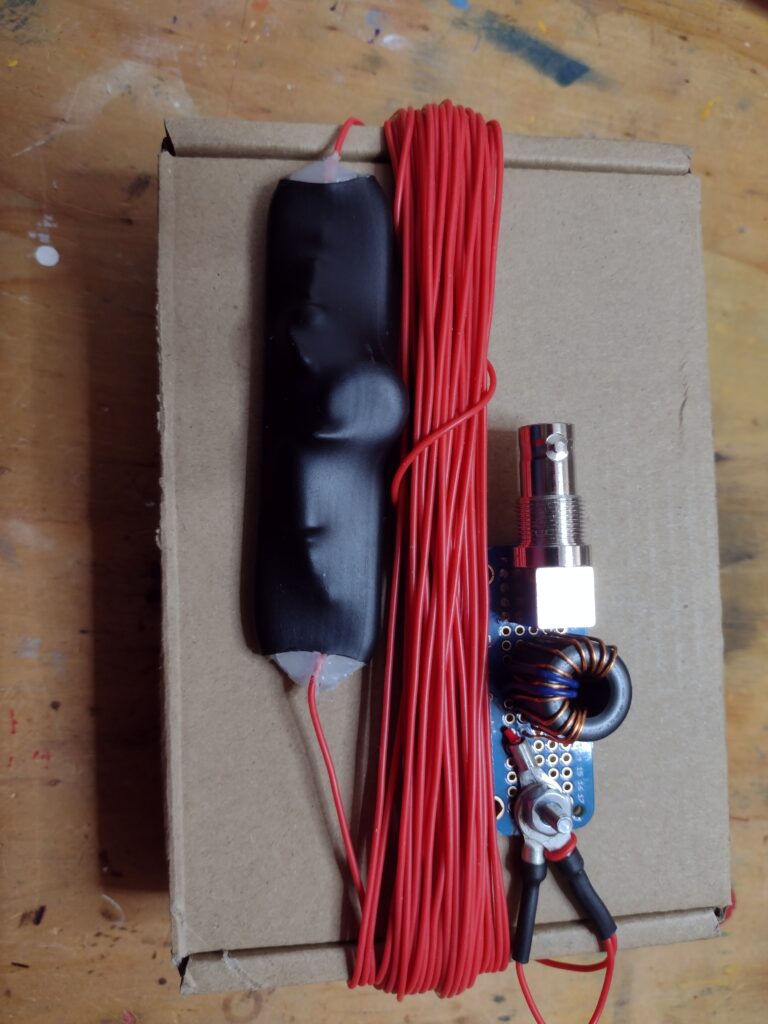Neighbors near me in this HOA location are very tolerant of my “backyard portable” vertical antennas. The antennas are not obtrusive in appearance, use little space and work reasonably well considering they are not multi element yagis on a 60′ tower.
For some time, I worked with Wolf River Coils verticals on 40M, 30M, 20M. I use them on a tripod sitting over a radial field of 18 radials, each about 16′ long. While reasonably effective, changing bands is really fussy. Get out the NanoVNA, adjust the coil, adjust the whip length, repeat until good enough for the transmitter to be happy. Wash, rinse, repeat…
Some will suggest a multiband vertical instead. Even though I had a good experience with a fellow ham’s 6BTV, I’m not willing to live with its equally fussy tuning and losses, esp when it’s hidden inside a flagpole and every adjustment is a sequence of: lower the pole, uncover the antenna, adjust, re-cover the antenna and re-raise the pole, quite an ordeal.
So, I had the idea that I could acquire a collection of Hamsticks (40M, 30M, 15M, 10M) tune ’em once, install quick-change adapters on them and have band changes within seconds. BZZZZZZZZZT! A couple of them worked OK above my radial field. The others wouldn’t. We read frequently that more radials are always better, and Callum tells us that up to a certain point that’s true.
More radials: It Ain’t Necessarily So
Gershwin tried to tell us… I spent a lot of time yesterday trying each of these HamSticks in different configurations. My goal was to discover the configuration of each with the lowest SWR, as indicated by a NanoVNA.
My first variable included trying them directly atop the WRC tripod and then atop 1 or 2 aluminum extensions, 24″ long, that are part of the Wolf River Coils family. Only one of the HamSticks liked to be atop the extensions. The 40M stick worked out best atop two 24″ extensions. All the rest sit directly on the tripod.
My second variable included different radial configurations: (1) the in-the-grass radial field, (2) a set of 3 radials each 33 feet long, and later (3) some shorter ones. The 40M and 20M sticks were OK with the 18x 16′ in-the-grass radial field. The others wanted shorter radials. The 15M stick liked 3×33′ radials better (1.572 vs 2.100). Next, I folded those in half and got even better results. After that revelation, I reduced the 3 radials to 1/4 wavelength for 15M, 11 feet each, and found yet better results. Same thing for 10M. Three really short radials outperform a bigger radial field. Who would’ve guessed?
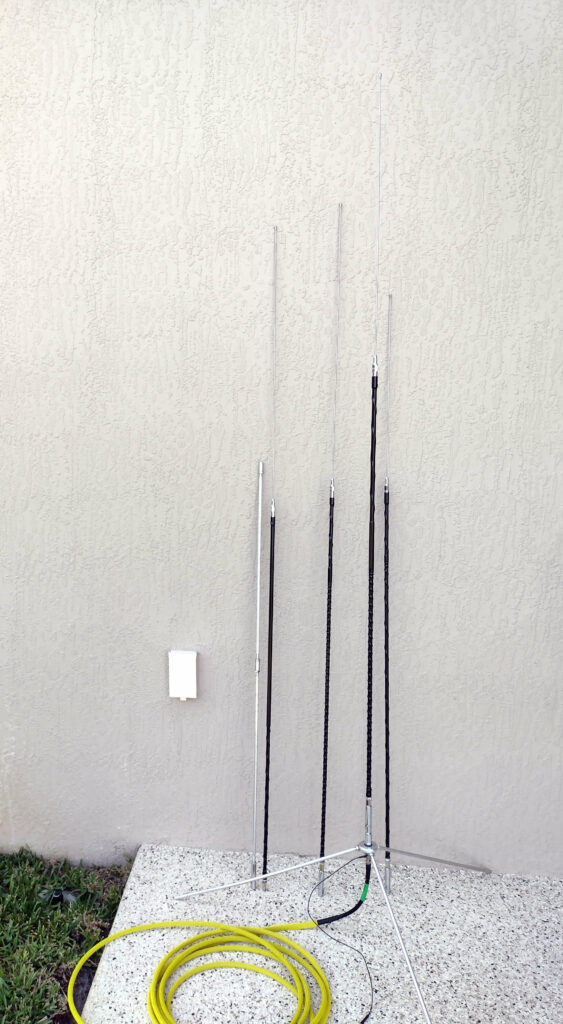
Of course, these measures of goodness are simply SWR numbers from a test device. On air performance is the real test. I’ve already made on-air contacts with all of them. My next round of measured testing will be WSPR runs.
Till then, this chart sums up my test results. I’ll be using he bold entries to make band changes fast, easy and tuner-free.
| Band | No radials | 3 x 11 ft | 3 x 33 ft | 18 x 16′ field |
|---|---|---|---|---|
| 40M | 3.65 | n/a | 1.718 | 1.387 |
| 20M | 3.52 | n/a | 1.082 | 1.085 |
| 15M | 1.718 | 1.139 | 1.572 | 2.132 |
| 10M | 1.595 | 1.483 | 1.583 | 1.656 |
